rids.verify@gmail.com
+91-9555-581-581 | 9401677773

About Guwahati | Kamakhya Temple | Nehru Park | Few Historical Facts about Guwahati: The City with Pristine Beauty | Umananda Temple | The Assam State Zoo cum Botanical Garden | Dipor Bil | Srimanta Sankaradeva Kalakshetra | Nehru Park |
Guwahati is a sprawling city beside the Brahmaputra River in the northeast Indian state of Assam. It’s known for holy sites like the hilltop Kamakhya Temple, featuring shrines to the Hindu deities Shiva and Vishnu. To the east, 18th-century Navagraha Temple is an astronomical center with planetary shrines. Umananda Temple, dedicated to Shiva and covered with engravings, stands on Peacock Island in the river.
Few Historical Facts about Guwahati: The City with Pristine Beauty
Guwahati, the city located in the north-eastern part of India, is endowed with pristine beauty. Surroundings with different types of small hills and perennial mighty the Brahmaputra River fetches special splendour of the city. Guwahati is an important city of India as it’s a trade centre of India also. It is pertinent to mention that in view of great importance of Guwahati as trade centre, on 2 February, 2018, the Government of Assam has signed a deal with the National Building Construction Corporation (NBCC) for setting up a 65-story twin tower trade centre in the city, which will not only generate huge employment but boost the economy of north- east also.
The city is having its own glory from ancient times. As per mythology the mighty River the Brahmaputra’s Father is Bhagwan Brahma. So it indicates that the city is having its own place from a mythological period. The famous Kamakhya temple and on the river Brahmaputra, the small island where Umananda temple is located are very popular for all the persons across the world because of pristine beauty and for this reason, many foreigners also visit these places in addition to Indians. There are few other important temples situated in Guwahati. Some of these are – the Navagraha, Ugratara, Basistha, Lankeshwar and Purva Tirupati Sri Balaji Temple. On the other side of the Brahmaputra which is known as North Guwahati have several ancient temples. A few are Dirgheswari, Manikarneswar, Rudreswar, Aswaklanta Temple and Doul Govinda. Also few old Namghars are located in Guwahati and one is in Paltan Bazar, heart of Guwahati. The Namghar is a prayer-house where the devotees chant/ pray to Bhagawan/God. Srimanta Sankardev (1449–1568) a saint-scholar of the north-east developed the idea. Anyway, the places are so attractive which one can enjoy by visiting only. I feel writing gives an idea for imagination but visit gives eye-catching views.
I wish to cover here some historical facts about Guwahati. The city along with the British- Assam, Manipur, Rakhine (Arakan), and the Tanintharyi (Tenasserim) coast south of the Salween River were annexed by the Treaty that was signed on 24 February 1826 known as the Treaty of Yandabo that ended the First Anglo-Burmese War. Also, Indians know the famous naval battle took place near Guwahati on the bank of the river the Brahmaputra in 1671 where under the leadership of great army general Sri Lachit Borphukan, the Ahom Army thwarted the Mughals who attacked the Ahom kingdom. It is pertinent to mention that in commemorative of his dedication, every year on 24 November Lachit Divas (Lachit Day) is celebrated across the State (Assam) as well as the victory of the Ahom Army at the Battle of Saraighat (now near Guwahati). Today his statue may be seen in many places of Assam including at National Defence Academy (NDA), Khadakwasla of Maharashtra. Also the best passing out cadet of National Defence Academy – the Lachit Borphukan Gold Medal- is conferred in his name initiated from 1999.
Before conclusion, I wish to mention the population side. The city at present is the home of 11.2 lakh people (2020). On the other hand, according to Mr WW Hunter, in his 1897 Statistical Account of Assam, mentioned Guwahati as the chief town of Kamrup district, with a population of 11,492 across an area of two square miles.
The Kamakhya Temple
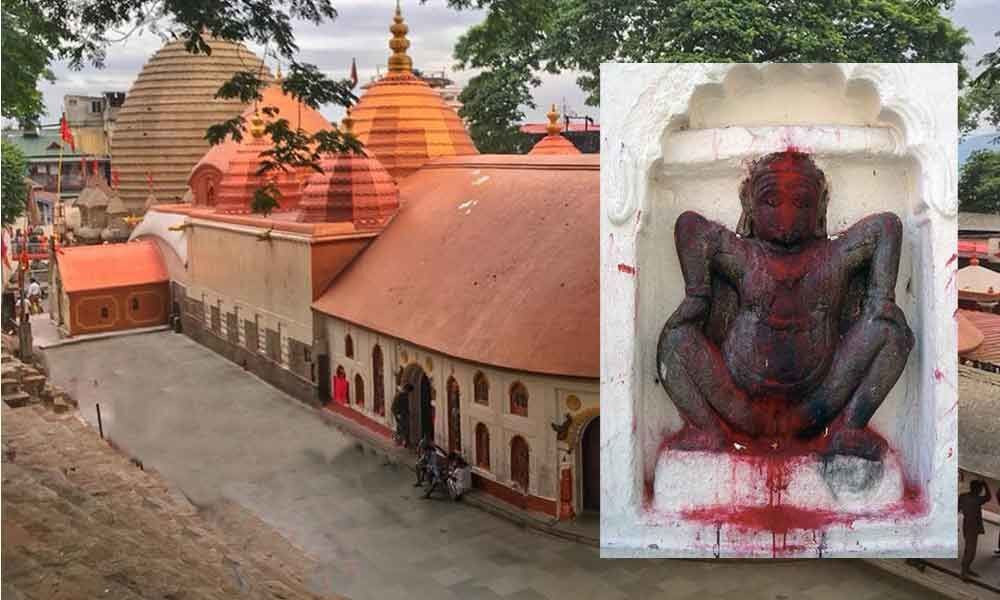
The Kamakhya Temple is a Hindu temple at Nilachal hills in Guwahati, Assam. Dedicated to the mother goddess Kamakhya, it is one of the oldest and most revered centres of Tantric practices. The temple is the center of the Kulachara Tantra Marga and the site of the Ambubachi Mela, an annual festival that celebrates the menstruation of the goddess. Structurally, the temple is dated to the 8th-9th century with many subsequent rebuildings—and the final hybrid architecture defines a local style called Nilachal. It is also one of the oldest of the 51 pithas in the Shakta tradition. An obscure place of worship for much of history it became an important pilgrimage destination, especially for those from Bengal, in the 19th century during colonial rule. Originally an autochthonous place of worship of a local goddess where the primary worship of the aniconic yoni set in natural stone continues till today, the Kamakya Temple became identified with the state power when the Mleccha dynasty of Kamarupa patronised it first, followed by the Palas, the Koch, and the Ahoms
Umananda Temple
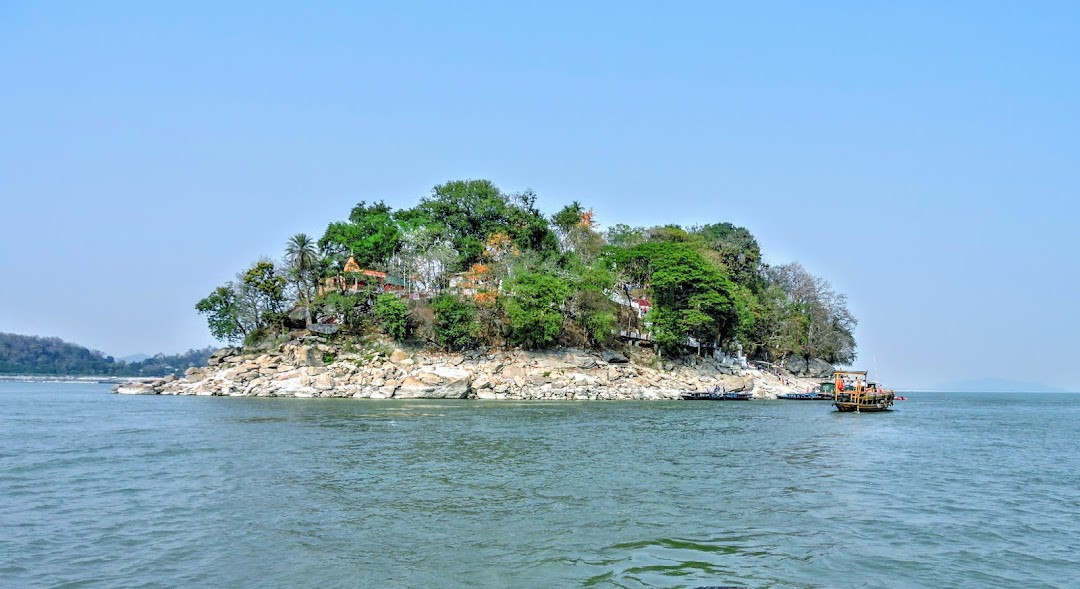

Umananda Devaloi is a Shiva temple located at the Umananda Island in the middle of river Brahmaputra just opposite the office of the Deputy Commissioner of Kamrup or the Kachari Ghat in Guwahati. It is known as smallest inhabited riverine island in the world. Country boats that are available on the bank of Brahmaputra take the visitors to the island. The mountain on which the temple has been built is known as Bhasmacala.It was built in 1694CE in the order of King Gadadhar Singha but was broken down by an earthquake in 1867.
The Assam State Zoo cum Botanical Garden
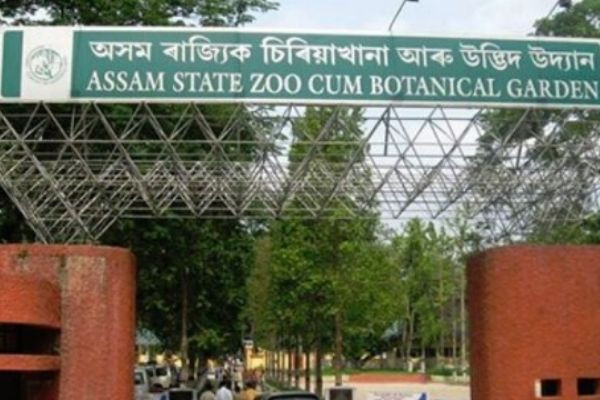
The Assam State Zoo cum Botanical Garden is the largest of its kind in the North East region and it is spread across 432 acre. The zoo is located within the Hengrabari Reserved Forest at Guwahati, India. The zoo is home to about 895 animals, birds and reptiles representing almost 113 species of animals and birds from around the world. The Divisional officer of Assam State Zoo is Mr Tejas Mariswamy from Mysore, Karnataka.
Dipor Bil
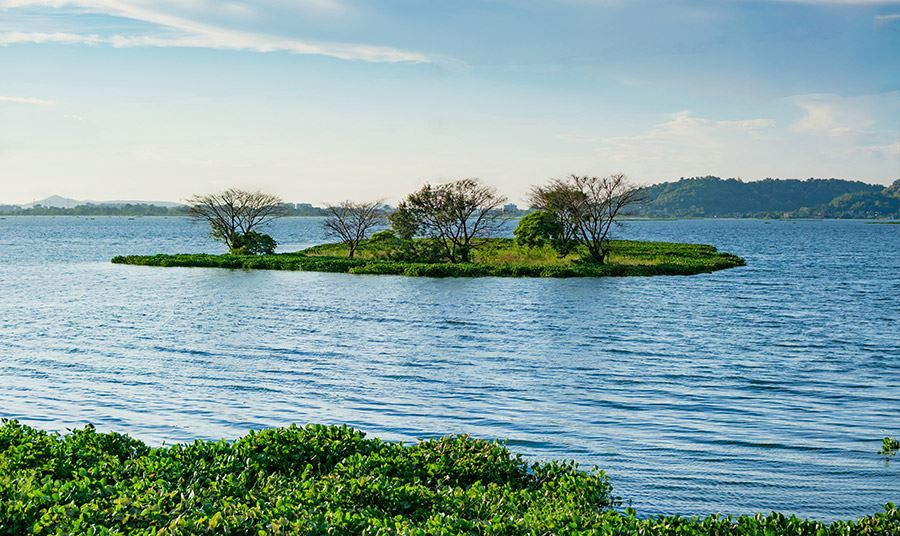
Dipor Bil, also spelt Deepor Beel, is located to the south-west of Guwahati city, in Kamrup Metropolitan district of Assam, India It is a permanent freshwater lake, in a former channel of the Brahmaputra River, to the south of the main river. It is also called a wetland under the Ramsar Convention which has listed the lake in November 2002, as a Ramsar Site for undertaking conservation measures on the basis of its biological and environmental importance. Considered one of the largest beels in the Brahmaputra valley of Lower Assam, it is categorised as representative of the wetland type under the Burma monsoon forest biogeographic region. The Dipor Bil is reported to provide, directly or indirectly, its natural resources for the livelihood of fourteen indigenous villages located in its precincts. Freshwater fish is a vital protein and source of income for these communities; the health of these people is stated to be directly dependent on the health of this wetland ecosystem. A member of Deepor Beel Fishermen’s Cooperative Society has succinctly stated: "Our forefathers protected this wetland and we are committed to do the same as we depend on the wetland for our livelihood.
Srimanta Sankaradeva Kalakshetra
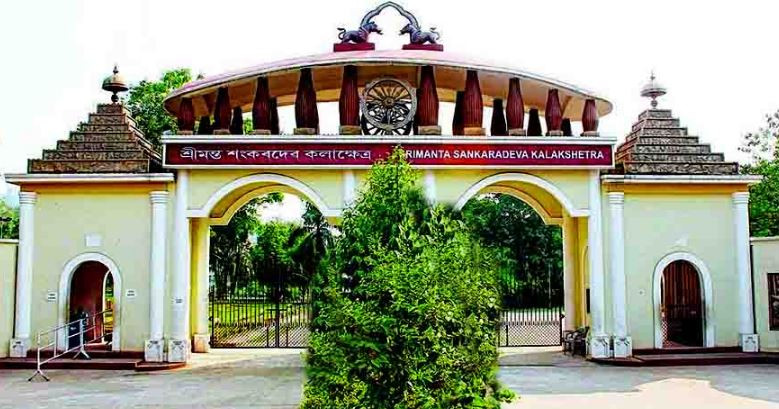
Srimanta Sankaradev Kalakshetra, commonly known as Kalakshetra, is a cultural institution in the Panjabari area of Guwahati, Assam, India, named after the medieval poet-playwright and reformer Srimanta Sankardev. It includes a cultural museum, library and various facilities for preserving, demonstrating and performing cultural items, besides a children's park. In addition to being Northeast India's largest cultural congregation, the Kalakshetra is also a major tourist spot in Guwahati. Built in the 1990s, the artistic excellence of Assam and rest of the north-eastern region is displayed here. There are eateries, places of worship, emporiums and open-air theatres within the sprawling Kalakshetra premises. It is governed by a body of executives, selected by the Assam Government's Cultural Department and is headed by a Director of the Assam Civil Service or Indian Administrative Service cadre. The Kalakshetra is divided into several complexes. The Central Museum exhibits the articles used by different ethnic groups of Assam. The museum also houses several cultural objects of the state within it
Nehru Park
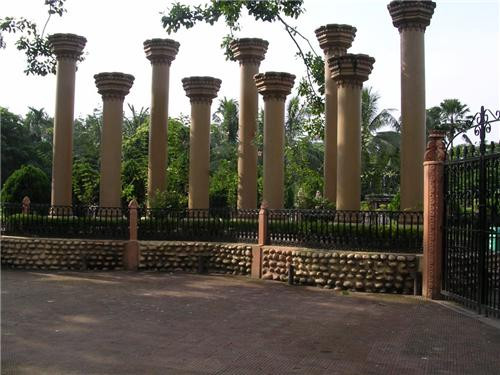
Nehru Park is one of the oldest parks in Assam. It is a public park in the heart of Guwahati city opposite the premier education institute, Cotton College. It is a major tourist attraction of the city as well as a place of recreation and walks for the Guwahati citizens. Historically, the area of the park earlier was part of an old church that was later developed by the Assam Government.







